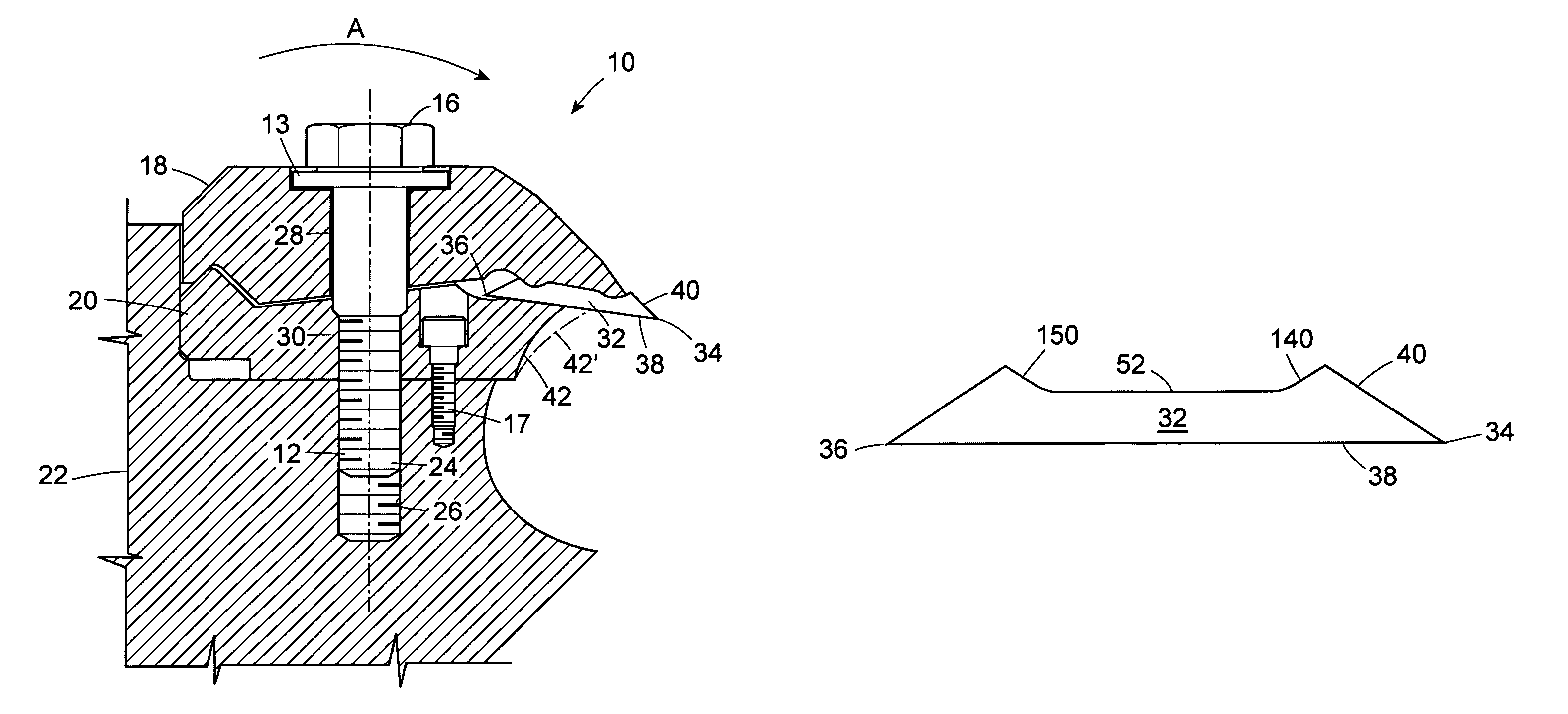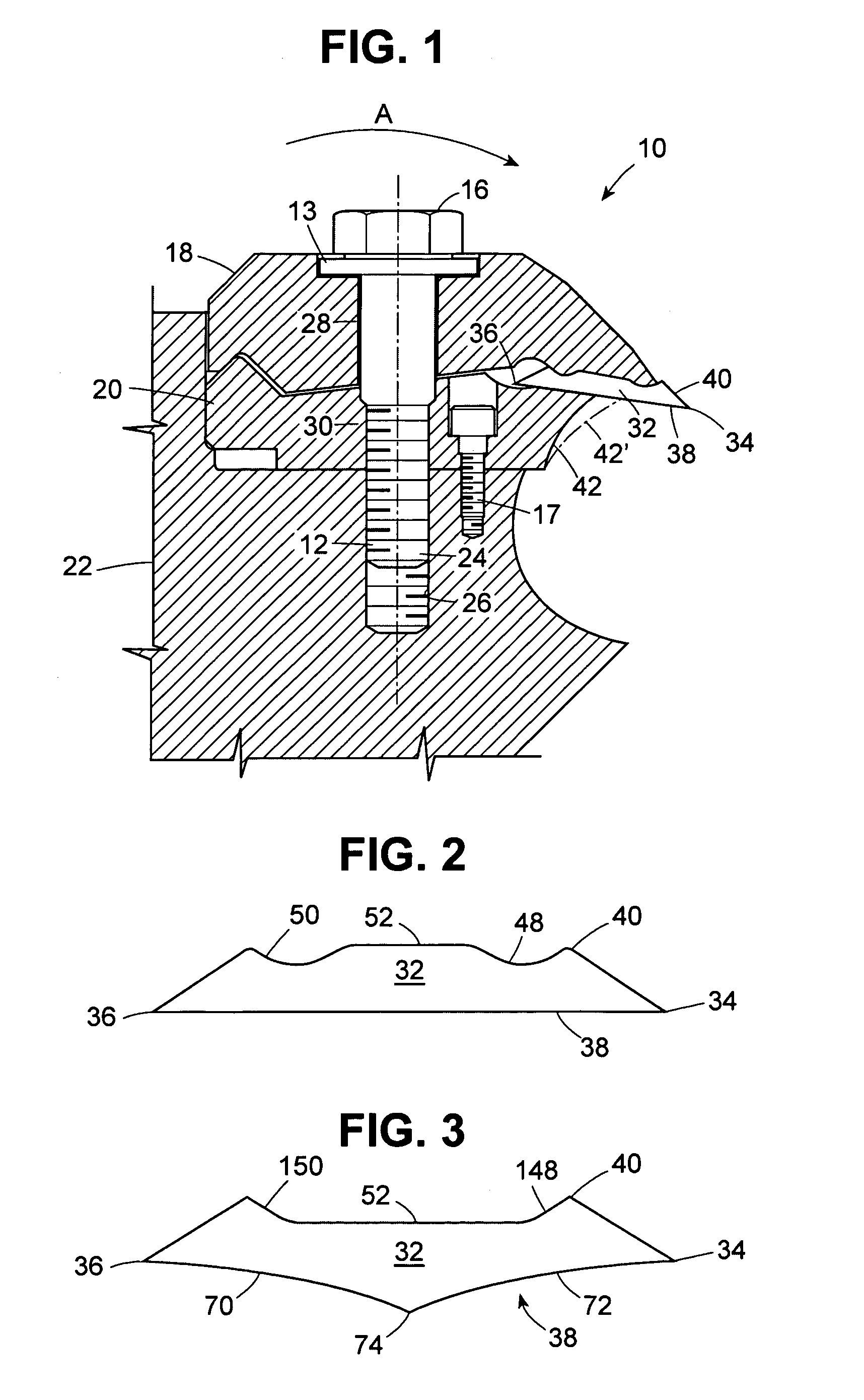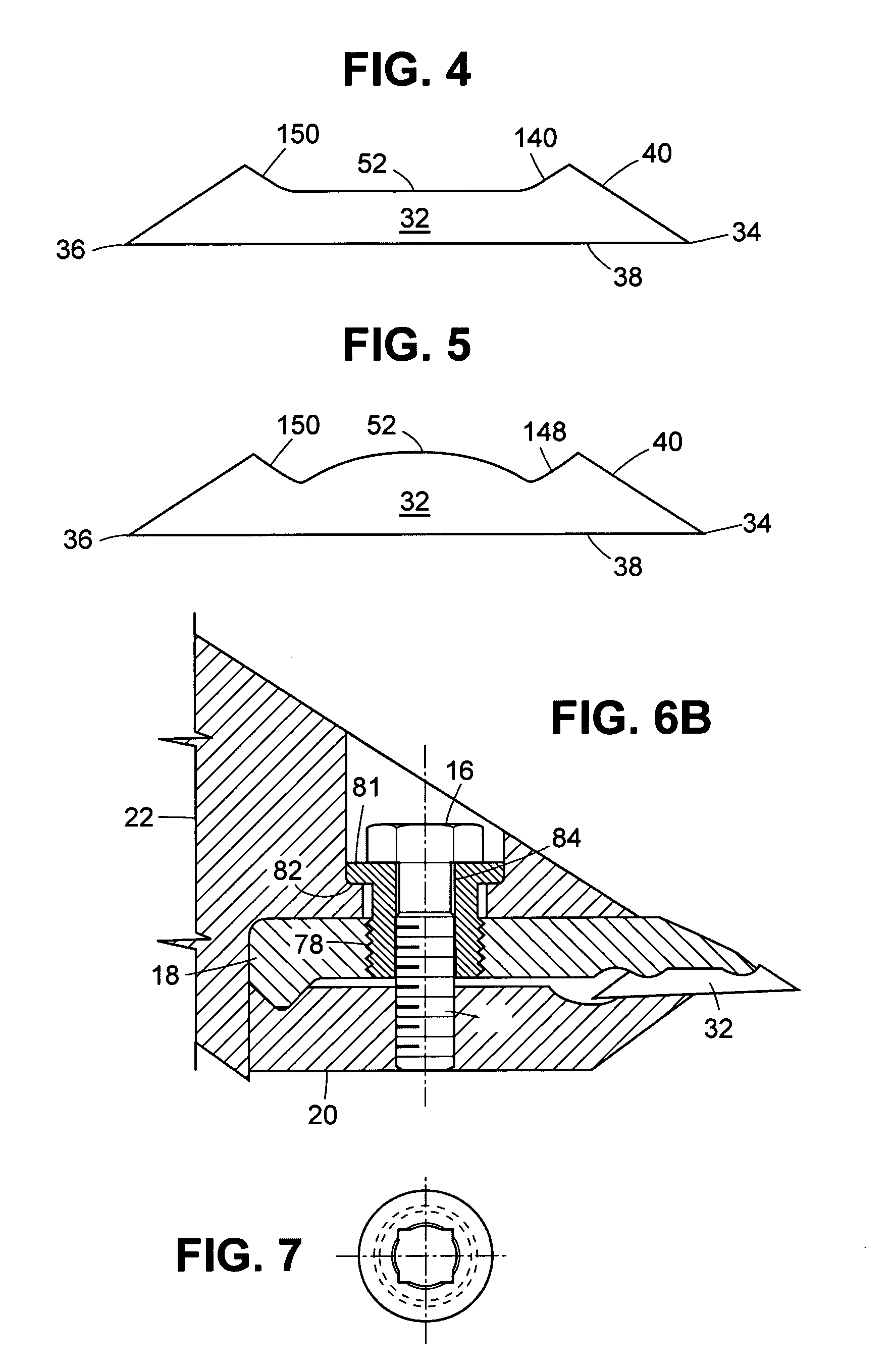Multi-application wood working knife and clamping assembly
a multi-application, woodworking technology, applied in the field of forest industry, can solve the problems of reducing the cutting accuracy of wood working knives, etc., to achieve the effect of reducing the risk of twisting or displacement during use, reducing the risk of slipping, and being easy to adap
- Summary
- Abstract
- Description
- Claims
- Application Information
AI Technical Summary
Benefits of technology
Problems solved by technology
Method used
Image
Examples
Embodiment Construction
[0049]FIG. 1 shows a knife clamping assembly indicated generally by reference numeral 10 clamping a knife 32. The knife clamping assembly 10 is mounted on a base 22 which may be any form of disc, drum, hub, or other base member, as may be used in chippers, chipper-canters, planers, waferizers, or other machines of the type used to process wood to form lumber, chips, veneer or wafers that includes knife clamping assemblies and knives.
[0050]The clamping assembly 10 includes a fastener in the form of a bolt 12 having a shaft 14 and a head 16. A washer 13 abuts the head 16. The shaft 14 of the bolt 12 extends through a first clamping component which is preferably in the form of a rear clamping component 18 and a second clamping component which is preferably in the form of a front clamping component 20. The front clamping component 20 is secured to the base using a locking component which is in the form of a base bolt 17.
[0051]Although the bolt 12 is shown as the preferred fastener of th...
PUM
| Property | Measurement | Unit |
|---|---|---|
| clamping forces | aaaaa | aaaaa |
| surface area | aaaaa | aaaaa |
| shape | aaaaa | aaaaa |
Abstract
Description
Claims
Application Information
 Login to View More
Login to View More - R&D
- Intellectual Property
- Life Sciences
- Materials
- Tech Scout
- Unparalleled Data Quality
- Higher Quality Content
- 60% Fewer Hallucinations
Browse by: Latest US Patents, China's latest patents, Technical Efficacy Thesaurus, Application Domain, Technology Topic, Popular Technical Reports.
© 2025 PatSnap. All rights reserved.Legal|Privacy policy|Modern Slavery Act Transparency Statement|Sitemap|About US| Contact US: help@patsnap.com



